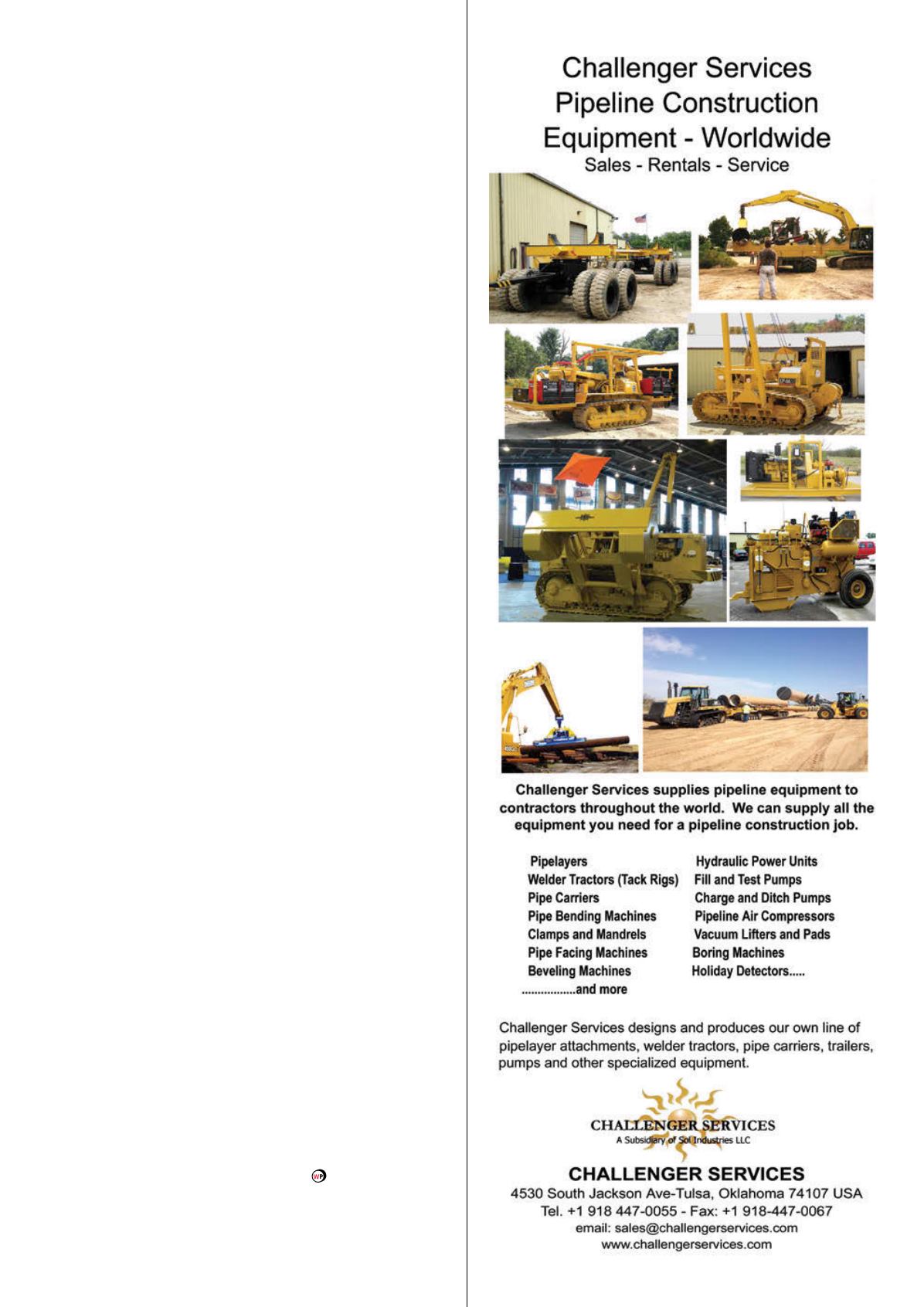
compressed air may be necessary to overcome static
heads and propel the dewatering pigs.
The filling pigs are propelled back to their original
position and water is discharged usually back to source.
Dewatering lines should be as short as possible and
connected to an open-topped break tank. Water may
then be pumped back to source in a controlled manner.
The static head of the section must be maintained
during dewatering. This will reduce as dewatering
progresses (unless dewatering up hill) and back-pressure
is reduced as the operation progresses until the line is
dewatered.
Operations to completion
Once individual sections are dewatered they are tied-in,
joints coated and back-filled and the completed pipeline
shall is then pigged end to end as follows:
)
)
Final swab – further removal of debris from tie-in
activities.
)
)
Final gauging – to prove the internal bore of the
pipeline is free from dents and buckles following
tie-in and final backfill.
)
)
Magnetic pigging – to remove grinding fines post
tie-in.
)
)
Geometric survey – to produce a record of the
internal bore of the pipeline (may be excluded, if
final gauging is accepted as a geometric survey).
Drying
The final pigging operations should be undertaken
using desiccant dry air to reduce final drying times.
Compressed air is passed through desiccant air dryers to
produce a dew point typically better than -40˚C DP.
Drying is undertaken to prevent corrosion, prevent
contamination of the gas and reduce hydrate formation.
The use of hi-seal bi-directional pigs (combined
with soft foam swab pigs for diameters
<
450 mm dia.),
propelled by super dry air is continued until a dry, dusty
pig is received. Final drying is achieved by blowing
through the pipeline until a plateau is achieved and the
dewpoint of air exhausted is approximate to that being
injected.
The pipeline is then left to ‘soak’ for a minimum
period of 12 hours and final dew points are to be taken.
The acceptance criteria is that the final dewpoint that
is taken should be better than -20˚C DP and there is no
significant decay from the initial readings taken.
Other activities required when pre-commissioning
cross-country pipelines to completion:
)
)
Pre-testing of HDD pipe and pipe used for final
tie-ins.
)
)
Testing and drying of installations (AGIs).
)
)
Testing of fabrications and spools.


